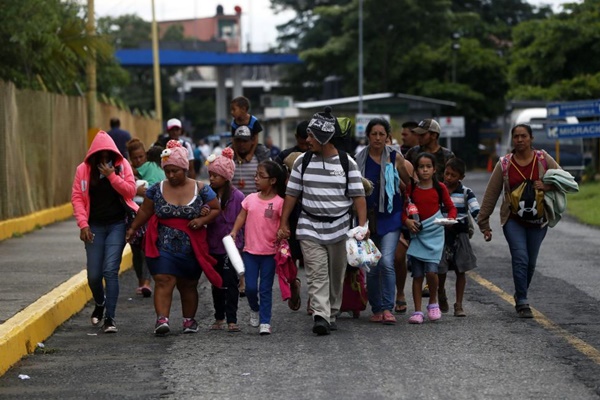MEXICO CITY, Dec. 28 (UPI) — As 2018 draws to a close, the United States is holding 15,000 unaccompanied migrant children in detention, with a fifth of those in the Tornillo “tent city” in the the West Texas desert.
In Tijuana, just across the border from San Diego, Calif., more than 5,000 Central American migrants are on waiting lists to seek asylum, blocked from international bridges by U.S. border sentries after marching thousands of miles together across Mexico.
The asylum denial rate has surged to its highest levels ever. Yet deportations, often seen as a bellwether of immigration enforcement, are still not at the peak reached during the Obama administration — even in the wake of President Donald Trump‘s zero-tolerance policy on illegal entry.
Chaos has overwhelmed U.S. immigration policy in 2018, ending the year with a government shutdown over funding for a border wall. How did it become so confusing?
“In 2017, there was this collective quiet, cautious sigh of relief among immigration advocates because we came to realize that immigration judges and federal judges were blocking a huge portion of Trump’s most extreme executive actions,” said Everard Meade, director of the Trans-Border Institute at the University of San Diego.
Last year, fewer than 3,000 unaccompanied children were in migrant detention in the United States. Mexican border cities did not house thousands of migrants. U.S. Border Patrol apprehensions were at at their lowest in 30 years. And U.S. courts had put Trump’s initiatives, like an immigrant travel ban, on hold.
“We thought the institutions were more resilient than we thought they were,” Meade said, “And then 2018 hit and all bets were off.
“What we started to see up and down the immigration system was the erosion of the very things we thought were resilient in 2017. Immigration judges facing more pressure to hold asylum seekers, particularly from Mexico and Central America, to a really high standard. The pressure to detain immigrants for a longer period of time.”
More children detained
There are about 100 shelters or foster homes for unaccompanied migrant children in 17 American states.
In 2018, the number of days a migrant child spends in these facilities — before being sent to an adult relative or friend who acts as a sponsor while their immigration case proceeds — has reached almost 60 days, three times longer than the legally accepted limit.
Longer stays have put pressure on the shelter network, forcing the government to open an “influx shelter” for unaccompanied migrant children in June at the Marcelino Serna land port of entry in Tornillo, Texas.
“Influx shelters” are meant to be temporary. The Obama administration turned to them in the summer of 2014 when a surge of thousands of unaccompanied children from Central America arrived at the border.
The number of unaccompanied minors crossing the border has risen for the past five years. But in 2018, policy decisions about releasing children to sponsors lengthened their time in detention.
In 2018, the number of days a migrant child spends in these facilities — before being sent to an adult relative or friend who acts as a sponsor while their immigration case proceeds — has reached almost 60 days, three times longer than the legally accepted limit.
Longer stays have put pressure on the shelter network, forcing the government to open an “influx shelter” for unaccompanied migrant children in June at the Marcelino Serna land port of entry in Tornillo, Texas.
“Influx shelters” are meant to be temporary. The Obama administration turned to them in the summer of 2014 when a surge of thousands of unaccompanied children from Central America arrived at the border.
The number of unaccompanied minors crossing the border has risen for the past five years. But in 2018, policy decisions about releasing children to sponsors lengthened their time in detention.






